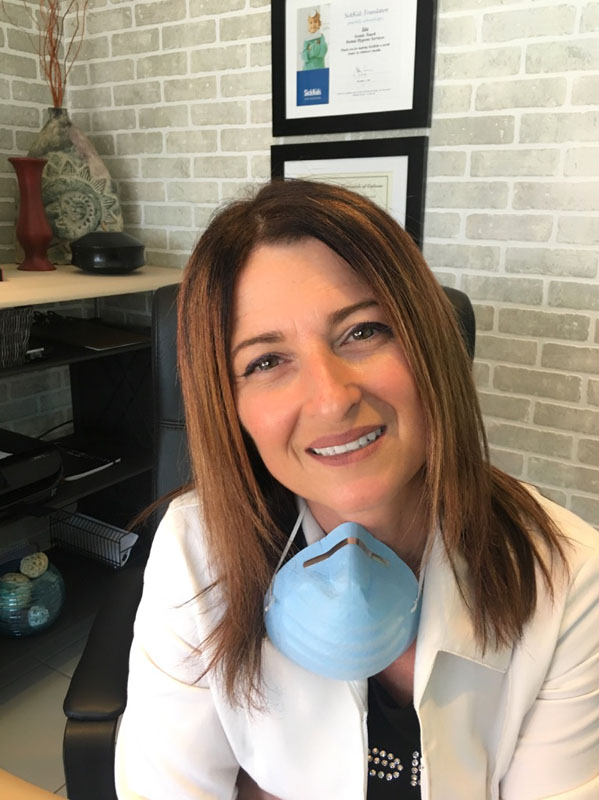
Desensitization

"Why are my teeth so sensitive?" A question asked by a large number of our clients.
Dentin Hypersensitivity, commonly known as tooth sensitivity is quite common in adults between the ages of 30 and 40. The pain caused by sensitive teeth usually occurs after we consume hot, cold, or acidic food and drink. For some, it may even occur from breathing in cold air. This may cause us to change how we brush or floss our teeth or change what we eat and drink.
What Causes Tooth Sensitivity?
Tooth enamel and Gum tissue protect the teeth but there are many ways that this protection can become weak. The Dentin layer of the tooth is ultimately responsible for this sensitivity. The Dentin layer of the tooth is porous. There are numerous “tubules” or “tiny holes” that easily transmit stimulus like hot, cold, sweet and sour or touch sensations directly to the nerve of the tooth.
The result is pain that may feel like a short, sharp twinge or stab that can happen suddenly and often passes quickly.
Keep In Mind...
Dietary Acids
Acidic foods and drinks can soften the hard enamel that covers the tooth surface. Examples are: pop, certain alcoholic beverages, citrus fruits and drinks or pickled products.
Brushing Too Hard/Gum Recession
Aggressive tooth brushing combined with using a “medium or hard-bristled toothbrush can cause enamel wear.
Proper Tooth Brushing technique prevents unnecessary receding of the gums. A result of brushing too hard which pushes the gum back until it no longer covers the tooth at the natural gum line.
Clenching/Grinding Your Teeth for those who tend to clench their teeth or grind during sleep can gradually remove enamel therefore causing sensitivity. Treatment is available to prevent further wear and sensitivity.
Temporary Sensitivity
This type of sensitivity is generally caused by bleaching/teeth whitening, gum surgery, scaling or polishing.
Treating Tooth Sensitivity
There are treatment options available from as simple as using desensitizing toothpaste, having your dental hygienist apply a concentrated fluoride varnish to the affected area(s) or seeing a dentist to determine if the exposed area(s) require treatment with particular bonding agents or sealants.



